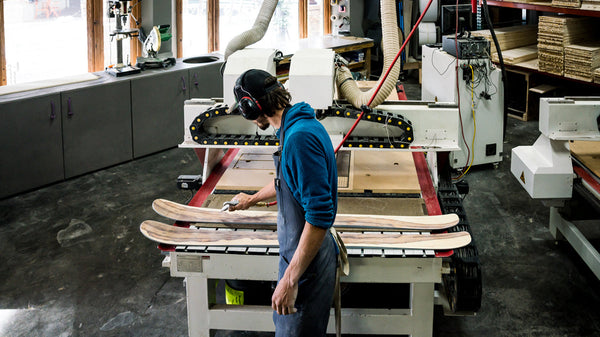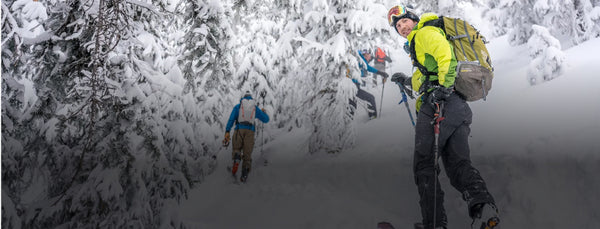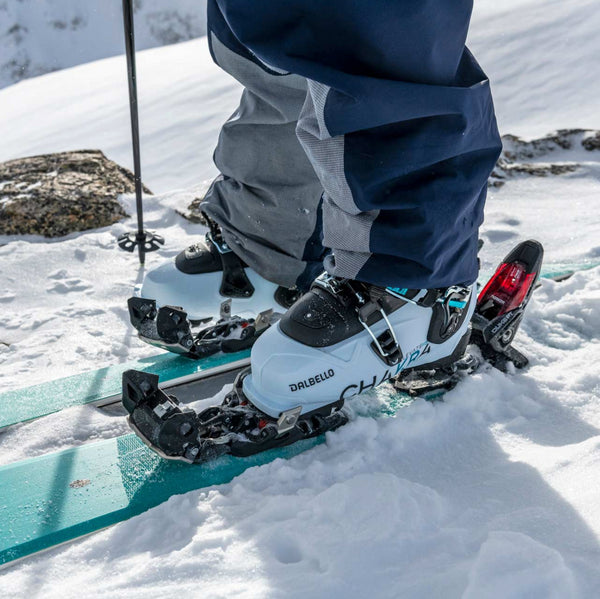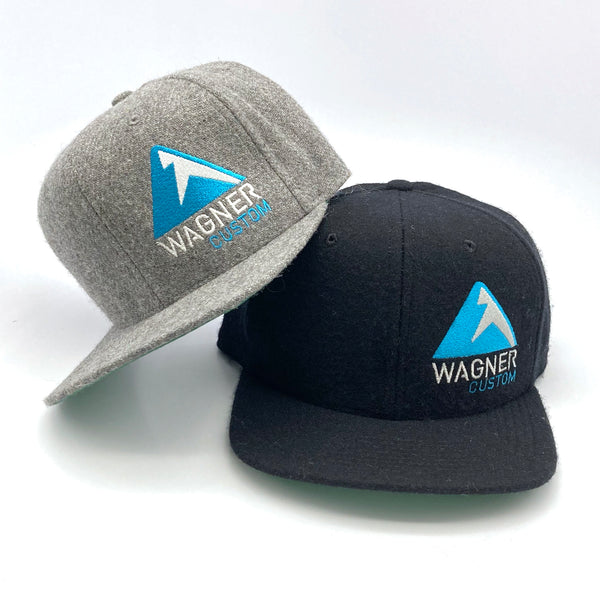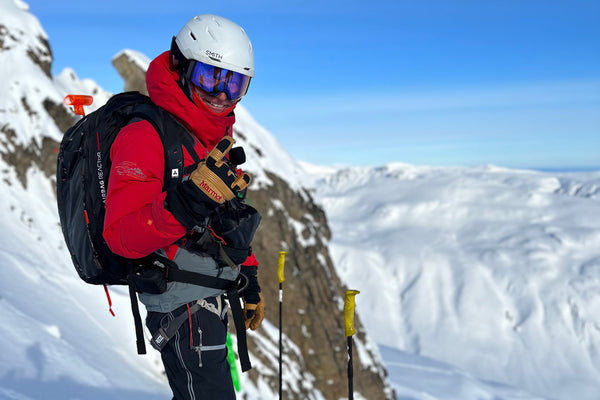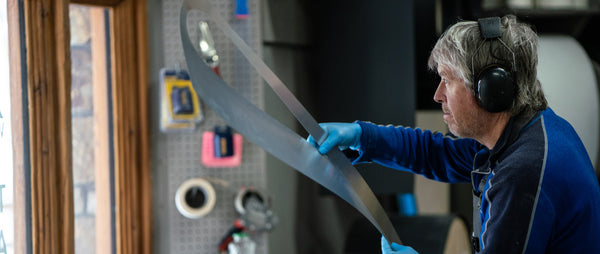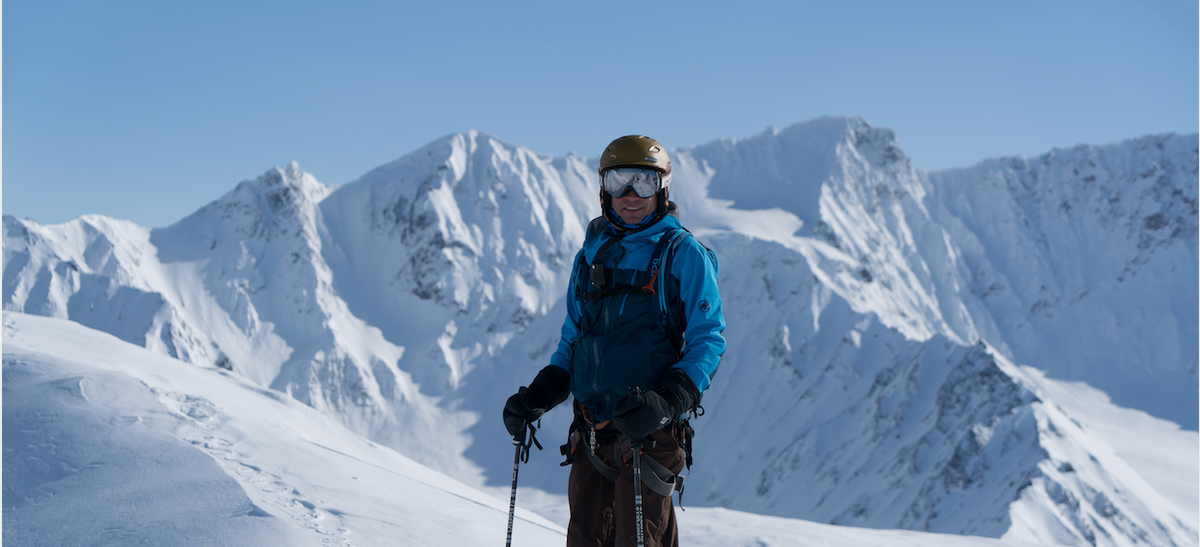
The Wagner Behind Wagner Skis: Q&A with Pete Wagner
Pete Wagner does not fit they typical profile of a ski bum who started a ski company in his garage.
He does not sport an ironic mustache, rarely uses the word “bro,” and geeks out about things like harmonics in flex patterns. Wagner is a mechanical engineer and computer scientist first, a skier second, and, well, just a really nice guy overall.
Wagner got his start writing software for enhanced-performance golf clubs, collecting information about how players were hitting the ball and then using that data to design their perfect clubs. A passionate skier, he moved to Telluride to work remotely and soon realized he could apply his skills to ski manufacturing. In 2006, Wagner Skis was born.
We caught up with Wagner recently via zoom from his office in Telluride’s Mountain Village to find out more.

Pete Wagner in his factory in Telluride, Colorado.
Q: Tell me about your lightbulb moment.
Wagner: I bought a pair of skis, and I quickly realized what I bought was not a great fit for me. They were too demanding. I realized I was creating all this technology to fit people into their perfect golf clubs, and I didn’t see anyone doing that in the ski industry.
So I wrote the software for creating custom skis. It was everything I did for golfers—I collected information about each skier and the software designed all of the steps in the manufacturing process. I then programmed the machines. When we started, there weren’t really any ski manufacturers in the U.S. There wasn’t really anybody else doing what we were doing. We basically created rapid prototypes with computer-controlled milling machines that used software to design and fabricate the parts.
Q: How do you collect data from customers to create their perfect skis?
Wagner: I couldn’t actually measure the data with skis like I did with golf clubs, so I created a questionnaire. I used predictive engineering to figure out how stiff the skis should be based on the skier’s weight, preferred terrain, and ability. I also built a database of other mainstream skis that cataloged materials, flex index, mounting points, and shape, so that when customers pointed to a ski they liked in the past, I could incorporate similar qualities.
Q: Did you know right away you wanted to start your own company?
Wagner: I shopped the system around to big manufacturers, but no one even wanted to talk to me about it. I thought I could probably do a better job than these ski companies and take the ski manufacturing process to a much higher level.
Q: What has been the key to your success?
Wagner: We’re really good at designing skis that fit people properly, and we have this manufacturing platform where we go through the same steps but make unique skis every time. It’s a mass customization model. We also pay attention to details. Our team of engineers and artists and craftsmen all live in the mountains because they love it. Building skis is a way for them to share their craft, and it translates into their passion. I think you can feel that in the ski. Large ski factories have a business model of making skis as cheaply as possible. That’s how they compete. We’re not part of that. We invest in the best materials we can get, spend more time, and have a consistent process to make a refined set of skis. If you come to Telluride and look at our shop, you’ll see the love and passion that go into the skis we build, and I think people can feel that.

Wagner Skis employee Herb Manning enjoys a ski break from the factory.
Q: How many skis do you build a day?
Wagner: We have 15 employees who build six pairs of skis a day.
Q: How did you know that there would be a market for custom skis?
Wagner: I was really inspired by ski-boot fitters. Skiers recognize the value of custom-fit boots. I saw an interesting model there: There are different densities of plastics and foams, but the foundation of a ski boot—injection molded plastic shells and some type of foam liner—is the same thing regardless of the brand or model. The way you can improve comfort and balance is by focusing on fit. That’s the model that we’re pursuing with the way we create skis.
Q: What’s been your biggest challenge?
Wagner: People are used to going into a ski shop and demoing skis and buying the one they like best. Magazines review skis and give advice to public about what is good, and that influences what people are going to buy. We come out of left field and said, “We’re not trying to fit you into any specific product.” People say, “Why would I want to buy a ski I’ve never skied before?”
Q: How do you reassure them?
Wagner: Our response is that it’s a smarter way to buy skis. We also fully guarantee it. Our customers have a design and engineering team that’s got their back. If someone doesn’t like the skis, we offer a full refund or rebuild the skis.
Q: How many pairs do you have to rebuild or refund?
Wagner: In the first year, we thought we would have to rebuild 20 percent of our skis. We ended up rebuilding only 7 percent. That showed that the software was really good. Every year that percentage has gone down—we now only rebuild or refund a small fraction of 1 percent. We’re not afraid to make a unique ski for every person because we’re really good at this. It works—people love our skis.
Q: What are the benefits of custom skis?
Wagner: People aren’t going to outgrow their equipment. The skis will have a bigger sweet spot and work better in broader snow types and terrain conditions right off the bat. They’re forgiving when they need to be, but they don’t chatter—they’re still smooth and stable. Just getting the flex pattern alone right makes a huge difference. It gives you better balance, comfort, control, and the skis will work better in more situations. It makes everything easier.

The CNC room in the Wagner Custom Skis factory.
Q: Do you have to be an expert skier to justify getting custom boards?
Wagner: Absolutely not. In fact, I think intermediates can get the most benefits from custom skis. Thirty years ago people would say, “I’m not good enough for custom ski boots—only racers have those.” Nowadays most people would never think about wearing a boot right off the shelf. This is so much better. It doesn’t matter if you know nothing or if you’re a sophisticated ski buyer. Our process works as well for the highest of experts as it does for beginners.
--
Interview by Kimberly Beekman
Kimberly Beekman is the former editor-in-chief of the late, great Skiing Magazine (RIP), and a longtime editor of SKI Magazine before that. She currently uses the title of “freelancer” as a beard to ski powder all over the world. She lives in Denver, Colorado, with her wonderful daughter and terrible cat.

